This article features firsts in 25 states: Alabama to Missouri. The next 25 states — Montana to Wyoming — can be found here.
Some of America’s “firsts” are widely recognized and even celebrated regularly — the Wright brothers’ first powered flight in 1903, Neil Armstrong’s first steps on the moon in 1969, Sandra Day O’Connor’s confirmation as the first female Supreme Court Justice in 1981. But there are many other, lesser-known firsts in our nation.
Every state, in fact, can claim “it happened here first” for some event, whether on a national or global scale. They aren’t all glamorous, and they aren’t all even worthy of celebration, but they are part of our history.
We’ve listed only one first for each state — going for the less-obvious choice where we could — which means we left out other state firsts that many are quite proud of. What first did we pass over in your state?
Alabama — First African-American Military Pilots
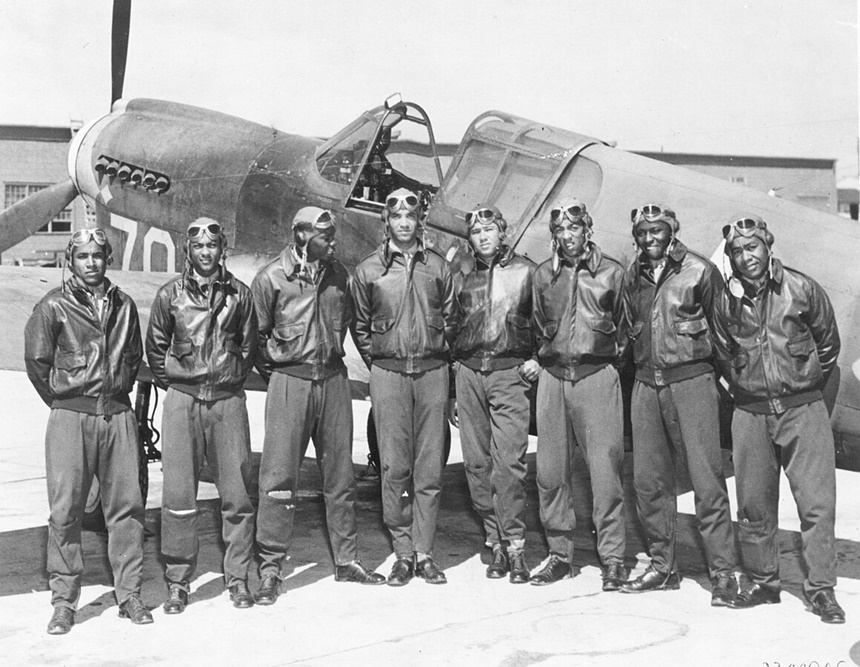
Trained at the segregated Tuskegee Army Air Field in Alabama, the first Black U.S. Army Air Corps, the 99th Pursuit Squadron, was formed in 1941. The famous Tuskegee Airmen received additional training in French Morocco ahead of their first mission in 1943 and served from bases in Tunisia, Sicily, and Italy. In 1945, the Tuskegee Airmen earned a Distinguished Unit Citation for their work in an escort mission to Berlin. The 447th Bombardment and 332nd Fighter Groups also trained at the airfield, which eventually closed in 1946. In all, 992 African-American pilots graduated from the Tuskegee Air Field training center. Over five years, the airmen flew 1,578 missions and destroyed 261 enemy aircraft.
Alaska — First Midnight Baseball Game
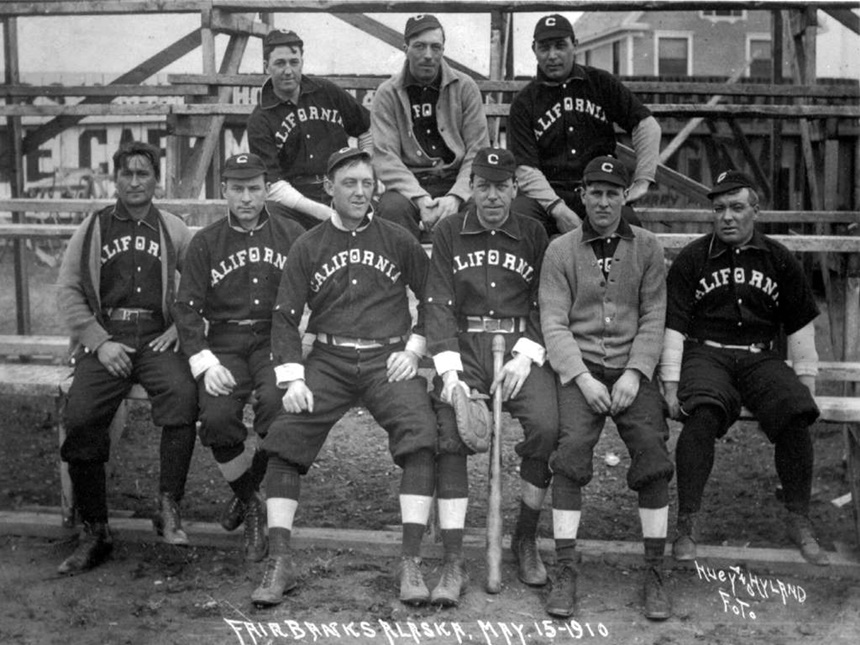
For baseball buffs, May 24, 1935, is an important date: It was that evening at Cincinnati’s Crosley field that the first Major League Baseball game was played in the evening under permanent lights. But Cincinnati’s got nothing on Fairbanks, Alaska. Since 1906, a baseball game has kicked off at Growden Memorial Park late at night, finishing up early the next morning. What’s more — it’s played without any artificial light.
How do they achieve this feat? The game occurs on the summer solstice, and Fairbanks is so far north that, though the sun does dip below the horizon for a while, it never gets too dark to play. The Midnight Sun Game is an annual tradition in Fairbanks.
Arizona — World’s First McDonald’s Drive-Through
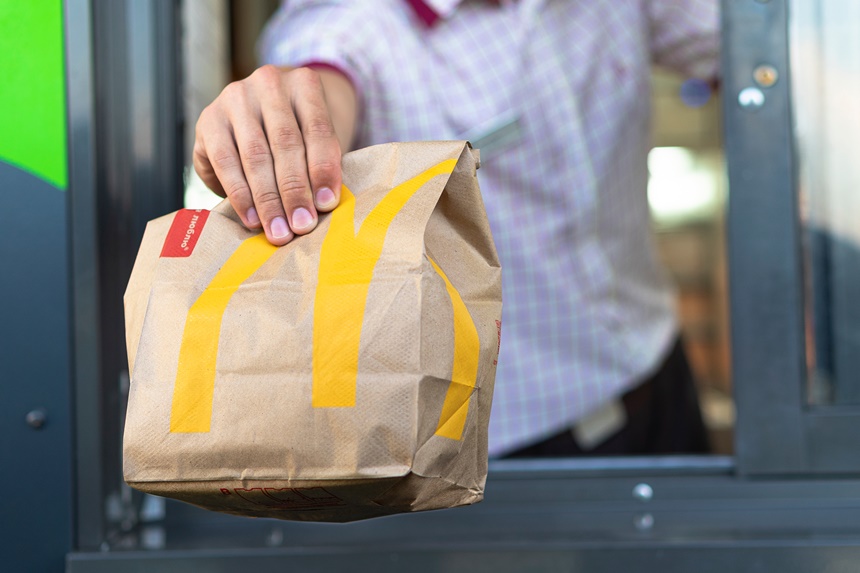
If you enjoy relaxing in your car at the drive-through, you have David Rich and soldier shenanigans to thank. Soldiers from Fort Huachuca, near Sierra Vista, were barred from appearing in public in their uniforms after some risqué behavior in the city’s red-light district cast the U.S. military in a negative light. In January 1975, David Rich, a McDonald’s manager, cut a person-sized hole in the wall of his franchise in Sierra Vista and used it to serve customers from their cars. Because being inside a vehicle didn’t qualify as “being in public,” soldiers could stop at the drive-through and pick up a meal with no outfit change required.
Arkansas — World’s First Walmart
Uploaded to YouTube by Walmart
On July 2, 1962, Sam Walton opened the first Walmart in the small but growing city of Rogers. The promise of significant discounts in rural Arkansas excited the townspeople, who lined up and waited patiently outside the building for Walmart’s grand opening, similar to the lines that today form outside Walmart’s Black Friday sales. In 1971, Walmart’s first distribution center opened in Bentonville. Last year, Walmart celebrated its 60th anniversary and its operation of over 10,500 Walmart stores and clubs.
California — First State to Legalize Medical Marijuana

While many folks may think first of Colorado as the most weed-centric state, California was actually the first state to legalize the use of medical marijuana, under the Compassionate Use Act in 1996. Patients can purchase up to 8 ounces of medical Mary Jane a day. Today, a majority of U.S. states and territories have legalized medical access to marijuana, though each state’s restrictions are different and possession of the drug is still a federal crime.
Colorado — World’s First Tampon with an Applicator
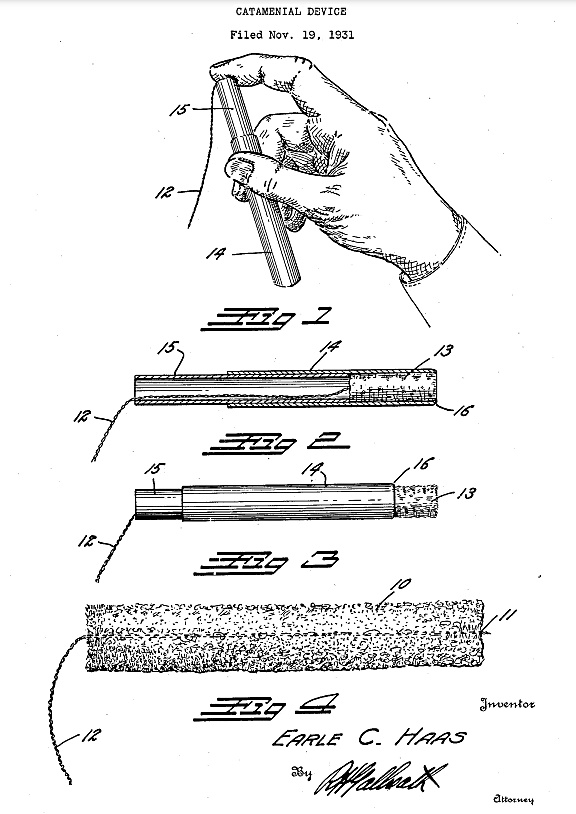
This first might not be glamorous, but for millions of women it sure is meaningful. In 1933, Dr. Earle Haas of Denver, Colorado, patented the modern tampon. While individuals tried to create their own makeshift tampons, most women used pads or sanitary napkins. He later sold the patent to Gertrude Tendrich, who went on to found Tampax. Though they had been around for decades, tampons with disposable applicators became much more popular after 1972, when the National Association of Broadcasters lifted its ban on televised tampon commercials.
Connecticut — World’s First Commercial Telephone Exchange
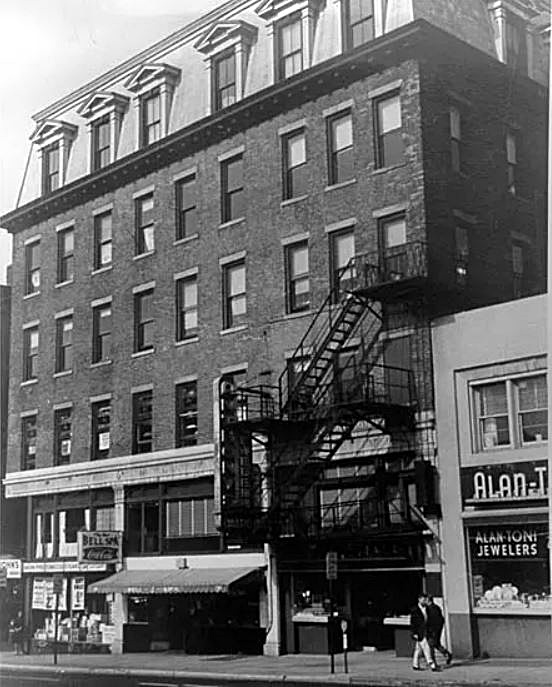
On January 28, 1878, in New Haven, Connecticut, George Coy’s creation of a telephone switchboard — with a central office and the potential to reach multiple subscribers — was implemented. The contraption was made of a unique mix of materials, including teapot handles. Before this advancement, telephones were owned by private individuals and businesses. The phones themselves were to be leased in pairs, and a technician was hired to string telephone wire between the two points of contact. The switchboard allowed anyone with a telephone to contact anyone else who had a telephone.
Delaware — First State to Ratify the Constitution
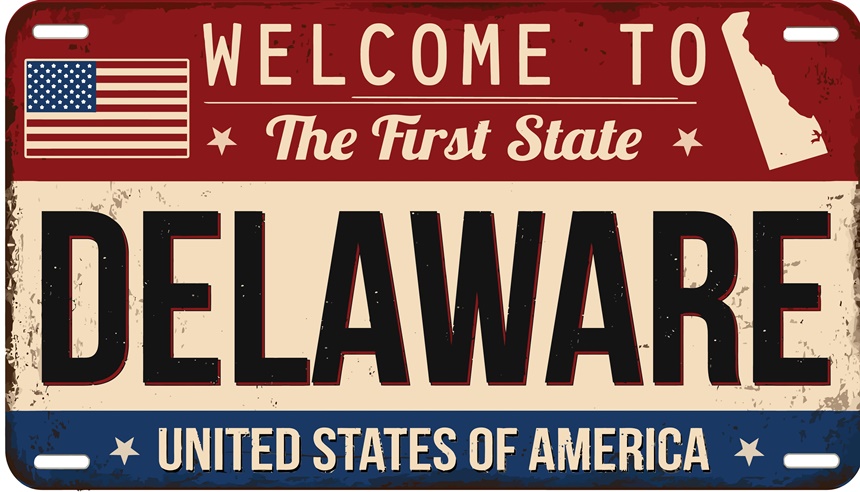
Delaware was the first of the 13 colonies to ratify the U.S. Constitution, on December 7, 1787, technically making it the first state. In 2002, Mrs. Anabelle O’Malley’s first-grade class at Mt. Pleasant Elementary School requested Delaware’s nickname officially become “The First State,” an idea that made it all the way to the legislature and was adopted.
Florida — First Electrolyte Sports Drink
How Gatorade was invented (uploaded to YouTube by FOX 13 Tampa Bay)
In 1965, Dwayne Douglas, assistant coach of the University of Florida’s football team, the Gators, wondered why his players weren’t urinating much after training and playing. The players also experienced extreme physical fatigue. A team of University of Florida scientists, led by kidney specialist Robert Cade, speculated that the players were sweating out electrolytes and experiencing severe dehydration. Cade’s team studied 10 freshman players to evaluate the accuracy of their hypothesis. After determining that electrolyte imbalance was the issue, they developed a new electrolyte-rich sport drink … and named it after the team: Gatorade.
The initial mixture of water, salt, and sugar tasted terrible before Cade’s wife suggested adding lemon to a batch. The scientists tested the beverage and found that players’ stamina improved significantly. The University of Florida claims that to this day, Gatorade is the most researched sports drink ever created.
Georgia — First Chartered Public University in America
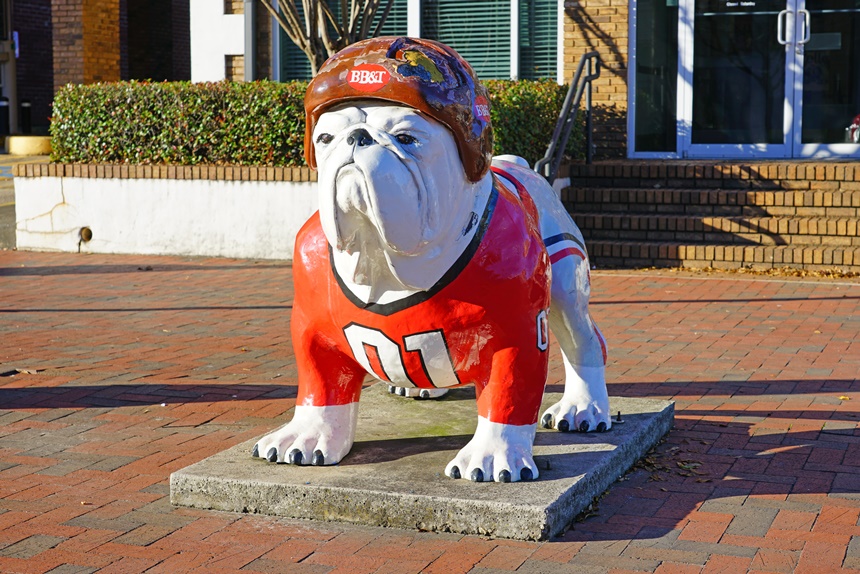
Abraham Baldwin founded the University of Georgia based on principles of accessible education after declining a position to teach at Yale University. The state officially chartered the university in 1785. While three schools boast the title of “Oldest Public University,” UGA (because who would want to go to a school called UG?) was the first school that was formally chartered. Twenty-six of Georgia’s governors have graduated from UGA.
Hawaii — First State to Outlaw Billboards
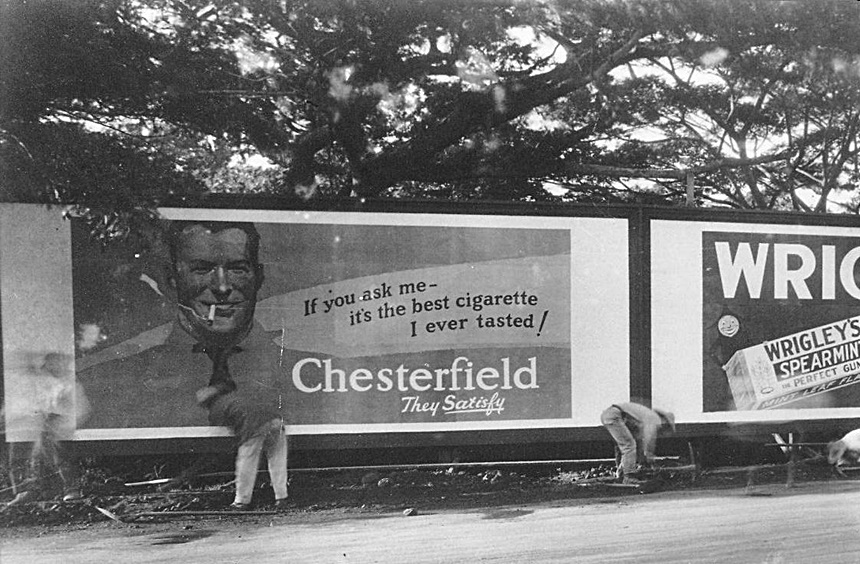
Despite all of the billboards you might see on the highway advertising exotic retreats to Hawaii, billboards are illegal in Hawaii itself. In preservation of the state’s natural beauty, the ban was passed in 1927 (32 years before statehood) ahead of three other states to ban the popular advertising method: Vermont, Alaska, and Maine. A few exceptions to this rule include signs promoting voting, signs authorized by the University of Hawaii “on any scoreboard of any stadium owned by the university,” and informative signs posted by public officers.
Idaho — World’s First Chair Lift
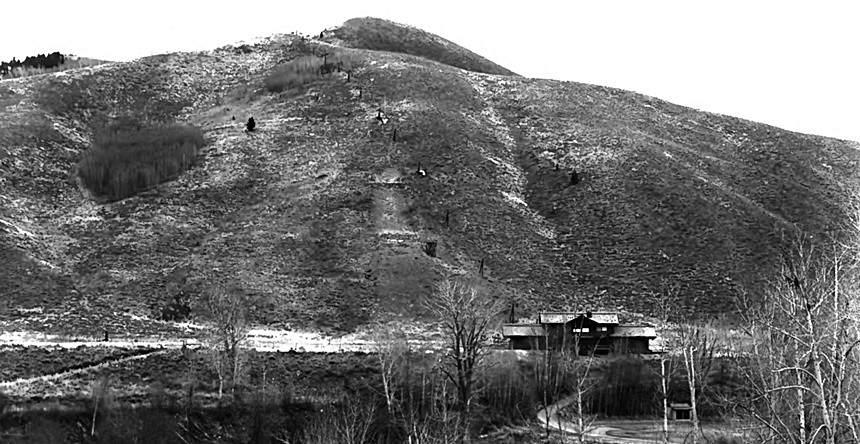
In the 1930s, Union Pacific brought Europe-inspired ski resorts to the United States. The first one, Sun Valley Resort, was located in Ketchum, Idaho, and opened in December 1936. William Averell Harriman, a Union Pacific bigwig, thought the allure of a skiing resort destination would encourage wealthy clients to use the Union Pacific railroads. James Curran, a young railway designer with the company, developed the chair lift based on conveyor belts he had designed to load bananas onto boats at a former job in Honduras.
Before the chair lift, skiers found a number of ways to get up a slope — trains, horses, tow cables, or just plain hoofing it. The chair lift allowed them to get higher up the mountain more quickly, easily, and cheaply.
The Sun Valley Resort, which remains open to this day, was a big hit among wealthy adrenaline junkies, but the chair lift also opened up downhill skiing to the general public as both a sport and a pastime worldwide.
Illinois — World’s First Ferris Wheel
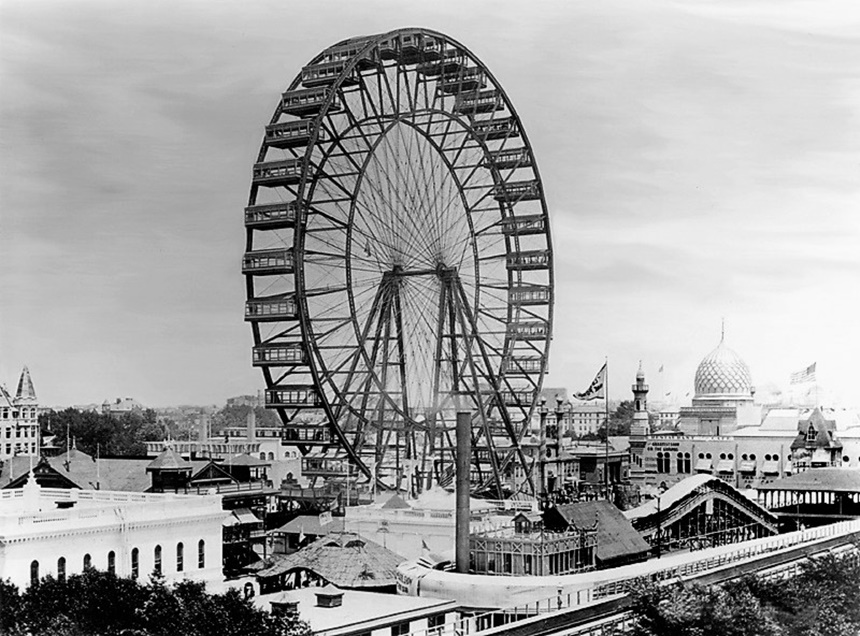
A design for those who fear the formidable roller coaster: George Washington Gale Ferris Jr., a structural engineer and steel inspector for the Chicago World’s Fair, shared his idea for the metal wheel with Daniel Burnham, head designer of the 1893 fair. Burnham had big dreams of outshining the Eiffel Tower, which had been finished only four years earlier, and asked his designers to develop “something novel, original, daring, and unique.”
Burnham initially turned Ferris down, thinking the design was too fragile. Only after Ferris invested $25,000 of his own money in development was the idea approved in December 1892.
Indiana — World’s First Theme Park
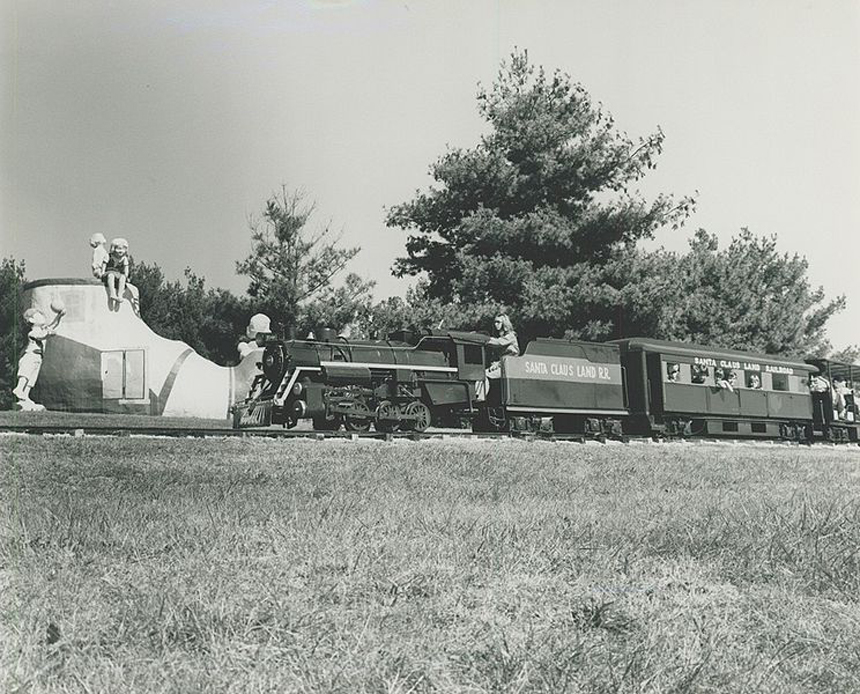
It’s a Merry Christmas year-round in Santa Claus Land! On August 3, 1946, Santa Claus Land opened in Santa Claus, Indiana. Created by Louis J. Koch, the park featured a toy store, restaurant, and Christmas-themed children’s rides. In addition to the “children from across the country [who] came to sit on the real Santa’s knee and whisper their Christmas wishes,” another notable visitor was Ronald Regan in 1955. Because the park expanded to include Halloween and Fourth of July-themed attractions, in 1984 the park was renamed Holiday World.
Iowa — First State to Desegregate Schools
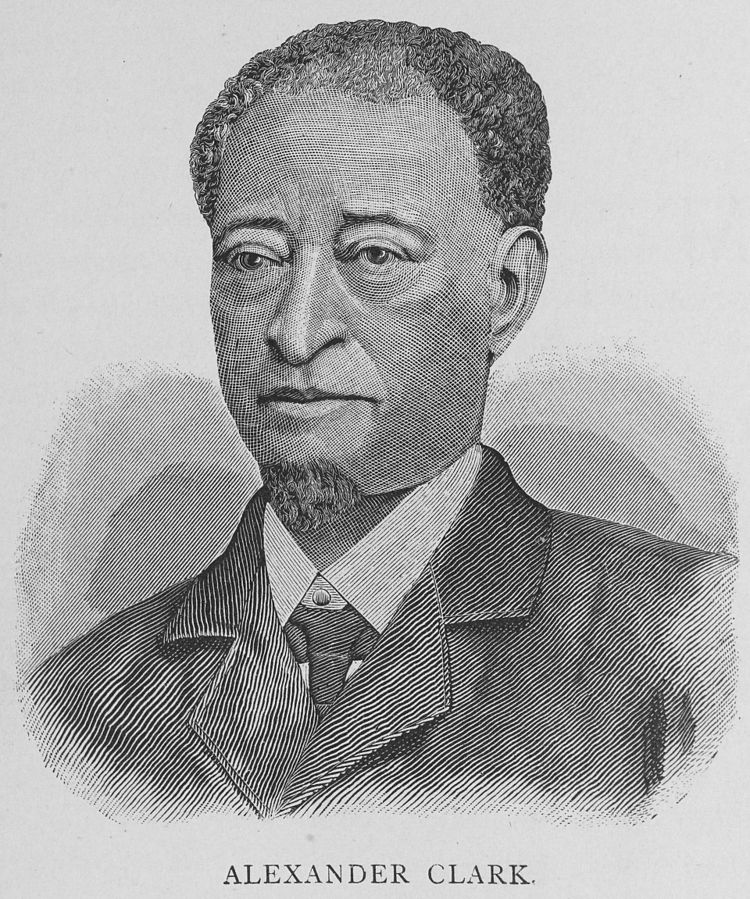
Eighty-six years before segregation was federally outlawed by Brown v. Board of Education, the Iowa Supreme Court desegregated schools in the 1868 landmark case Clark v. Board of School Directors. In 1867, 12-year-old Susan Clark was barred from attending Muscatine’s Second Ward Common School Number 2 because she was Black. Alexander Clark, Susan’s father, sued the school. The case was ultimately brought to the Iowa Supreme Court, where they ruled that children of color could not be denied admission to schools because of their race, saying “the law makes no distinction as to the right of children … to attend the common schools.”
Kansas — World’s First Pizza Hut
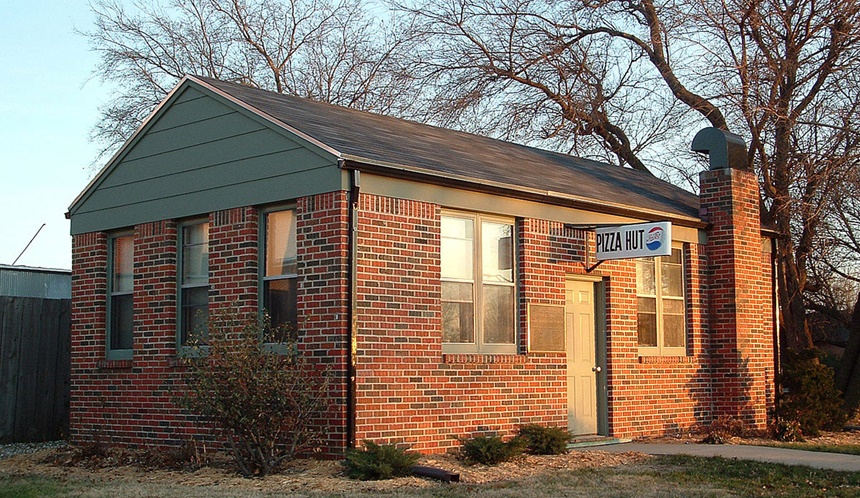
In 1958, brothers Frank and Dan Carney opened a small pizza place using a $600 loan from their mother. The shop opened in Wichita, Kansas, in a rented 600-square-foot building. The origin of the store’s name is debated: according to the Pizza Hut website, the brother’s sign could only fit eight letters, and thus the Pizza Hut name was born. The New York Times reported that Dan’s wife suggested the name because the store was so small it was hut-like.
On the shop’s opening day, the brothers offered free slices to prospective customers. In 1972, the company went public on the New York Stock Exchange and was eventually sold to PepsiCo for $300 million in 1977. Today, there are more than 19,000 Pizza Hut locations all over the world.
Kentucky — First Commercial Winery in the U.S.
History of First Vineyard Winery (uploaded to YouTube by First Vineyard)
When you think of American wineries, you likely think of California, but the first commercial winery was actually located in Lexington, Kentucky. Swiss immigrant John James Dufour founded the vineyard, calling it “First Vineyard.” Dufour came to America in 1796 and began assessing the soil quality across the eastern United States. A major port on the Kentucky River, good humidity, and excellent soil quality made Lexington ideal for a vineyard. It became the first commercial winery in 1799 by a Kentucky state statute. Some of the winery’s backers included Secretary of Treasury George Gibb, Secretary of State Henry Clay, and Kentucky Governor James Garrad. According to First Vineyard, Presidents Thomas Jefferson and James Madison both drank wine from First Vineyard while in office.
Louisiana — World’s First Indoor Movie Theater
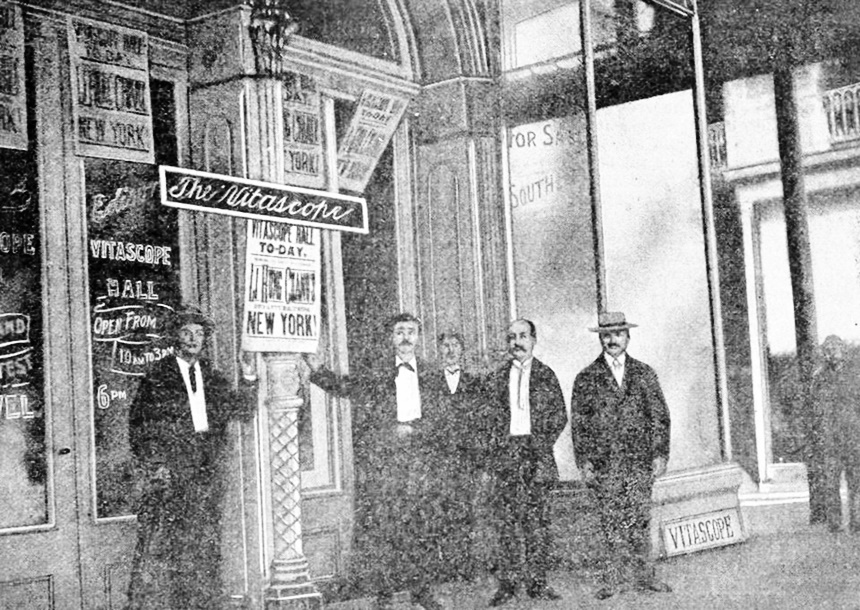
On July 26, 1896, Vitascope Hall opened in New Orleans, Louisiana. The theater was founded by New York businessman William T. “Pop” Rock and his business partner Walter J. Wainwright. Rock paid $2,500 to serve as a New Orleans Vitascope film projector promoter. Thomas Edison marketed this early projector, which was patented by Charles Francis Jenkins and Thomas Armat in 1895. Rock rented a former storehouse and blacked out its windows with canvas to create the theater. The auditorium sat 400 eager audience members in fixed chairs and used church pews to watch the theater’s short films, and for a little extra money they could get a glimpse at the Vitascope machine itself.
Maine — First State to Ban Alcohol Ahead of the Prohibition Era
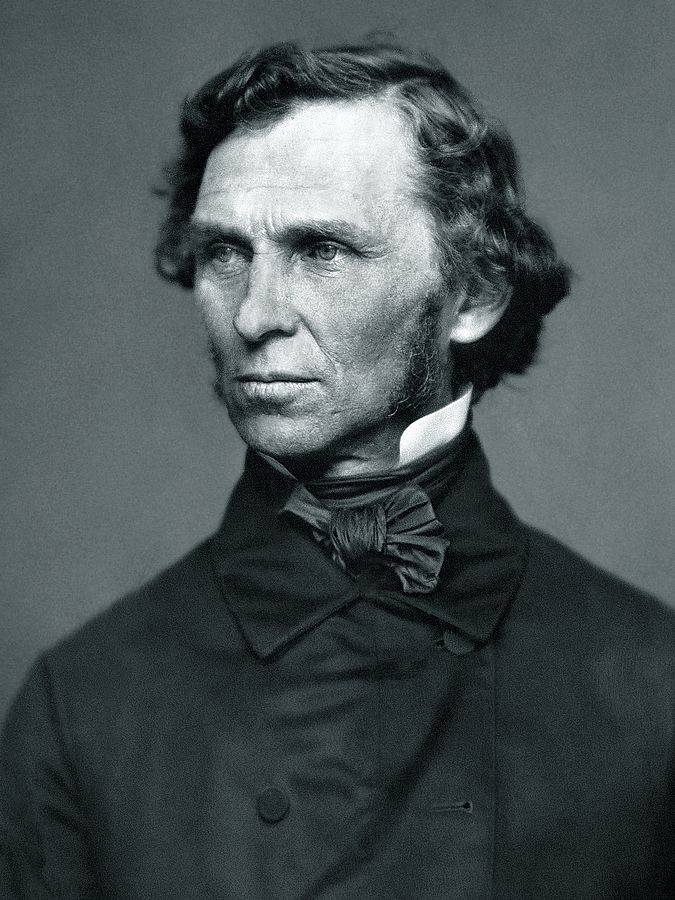
Nationwide, the Prohibition Era officially began in 1920 after the ratification of the 18th Amendment, which banned the “manufacture, sale, or transportation of intoxicating liquors.” However, in 1851, Maine became the first state to enact prohibition, long before alcohol’s federal ban. The Total Abstinence Society was founded in Portland, Maine, in 1815, and eventually a state organization of temperance societies was officially formed in 1834. The movement grew in size and influence, led by the “Father of Prohibition,” Quaker and politician Neal Dow.
Maryland — World’s First Airport
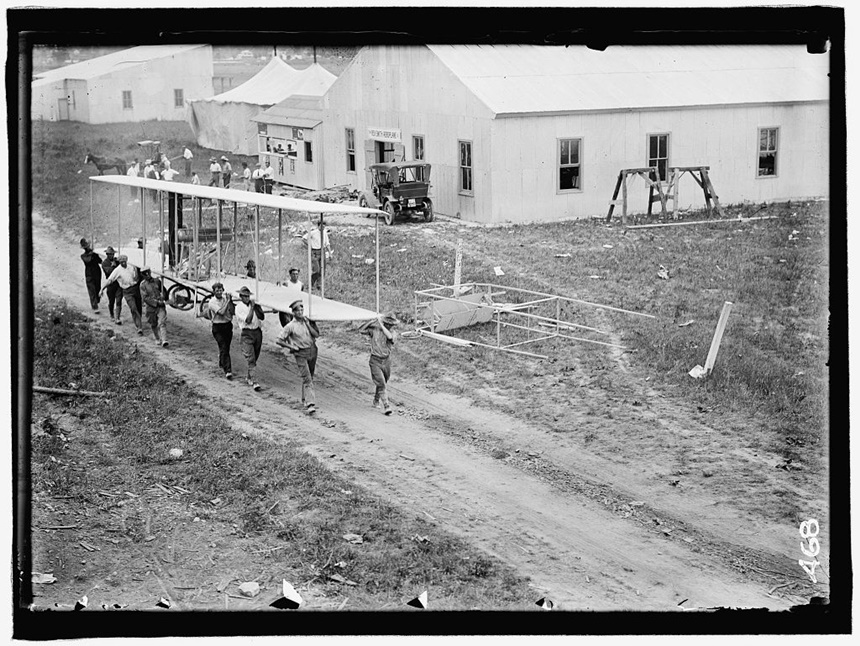
After the Wright brothers’ first powered flight at the end of 1904 proved the viability of air travel, the technology developed quickly. The military in particular was keen to see how air flight could change their tactics. So, near the end of 1909, Wilbur Wright traveled to College Park, Maryland, to train Lt. Frank Lahm, Lt. Benjamin Foulois, and Lt. Frederic Humphreys on how to fly the Wright plane the government had bought from them that summer. Those officers would then become the primary trainers for the rest of the Army’s future pilots.
The airport built to accommodate the endeavor was the first of its kind. And being a first in such an exciting new technology, the College Park Airport was the location of many other aviation firsts, including
- The first Army aviation school
- The first U.S. Postal Air Mail service (from 1918)
- The first controlled helicopter flight (1924)
The College Park Airport is still an active airport today, also making it the nation’s oldest continually running airport.
Massachusetts — First Subway in the Americas
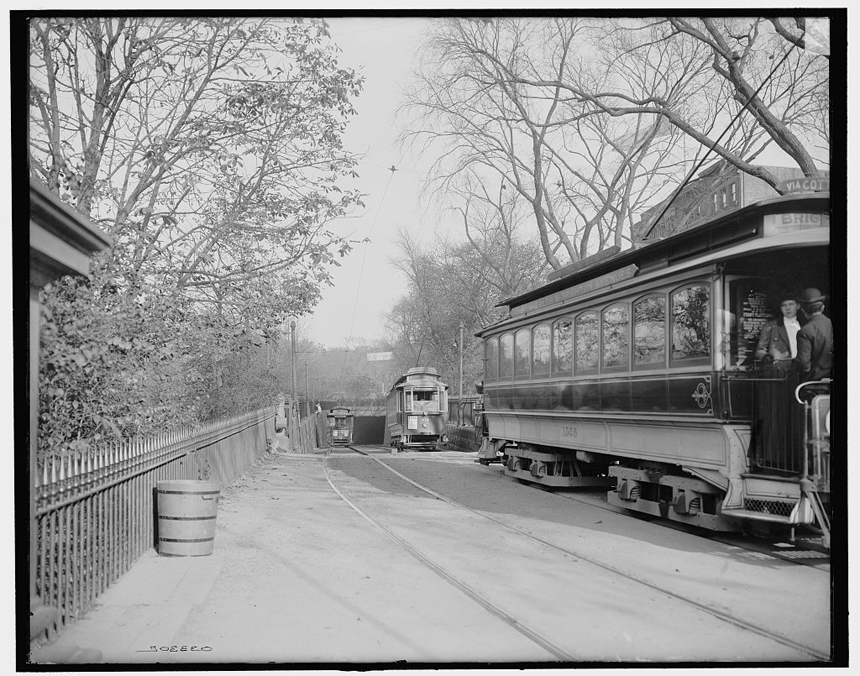
The population was growing in Boston at the end of the 19th century, and with the advent of the automobile, they were more mobile as well. All that change meant more congestion for people trying to get to and from work. A few possibilities were considered, but in the end the government of Boston decided to follow the example of some large European cities and install a subway system.
Construction began in 1895 and combined characteristics of the London and Paris systems: Boston’s subways used the London-style tube-style tunnels, but instead of boring tunnels through the earth, workers excavated open trenches as had been done in Paris. When they were deep enough and the walls well-supported, those tunnels were then covered, giving the above-grounders their surface area again.
On September 1, 1897, the first riders crowded into the first subway car at the Park Street station to make the 3 1/2-minute journey beneath the city. The system would be expanded and eventually joined up with Boston’s elevated train system — what’s known as the “T” today.
Michigan — First to Abolish the Death Penalty
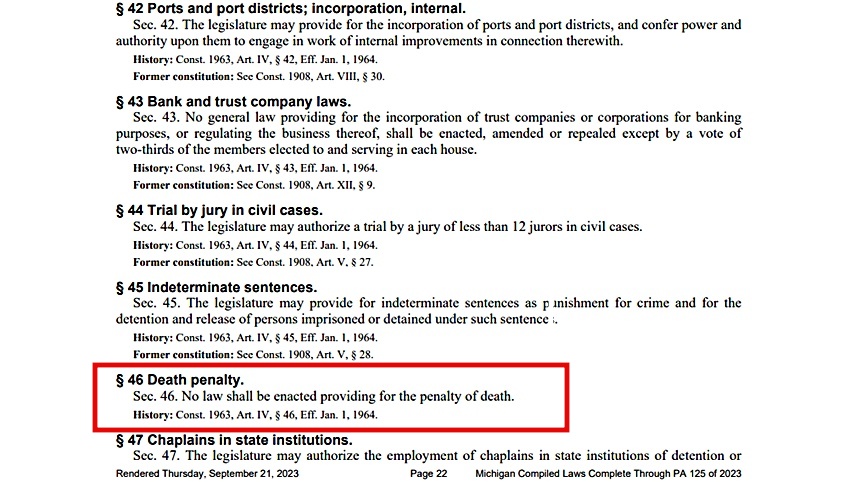
The right of the state to execute people has been long debated and, especially beginning in the second half of the 20th century, state laws allowing or abolishing the death penalty change almost yearly. But not everywhere. The state of Michigan banned the death penalty for murderers way back in 1847.
Michigan achieved statehood a decade earlier, in 1837, and not long after, the state separated first-degree and second-degree murder and made capital punishment an option only for first-degree murder. However, no one was ever executed under that statute. In 1846, a new law was passed changing sentences of capital punishment to life in prison without the possibility of parole, going into effect on March 1 of the following year. With that law, Michigan became the first U.S. state — and the first government in the English-speaking world — to abolish the death penalty.
Fast-forward more than a century to 1962: That’s the year that death penalty abolitionists found enough support to pass an amendment to the state constitution that reads, “No law shall be enacted providing for the penalty of death.” This makes Michigan the first (and currently only) state with a constitutional ban on the death penalty.
Since becoming a state in 1837, there has never been a state-sanctioned execution of a criminal.
Minnesota — World’s First Air-Conditioned Home
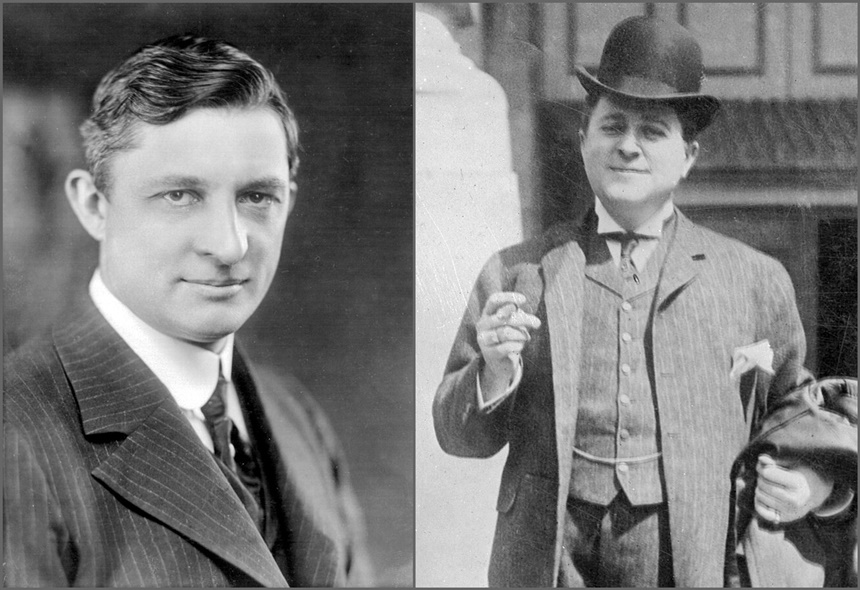
By the end of the 19th century, experimentation with refrigeration had yielded several competing means of mechanically cooling the air. These large, expensive contraptions were used primarily in hospitals and factories. While working with a publishing company on a way to keep paper cool during printing, Willis Carrier discovered, in 1902, the basic formula for both cooling and dehumidifying air that all modern air conditioners are based on.
It took him a while to move into home cooling, though. It wasn’t until 1914 that Carrier installed the first home air conditioner in the summer home of Charles Gilbert Gates in Minneapolis. This was no compact window unit: Carrier’s air-cooling machine was 7 feet high and 20 feet wide. And, oddly, it was installed in Gates’s home the year after he was killed on a hunting trip out West, so it might not have gotten a lot of use.
Mississippi — First Public University for Women in America
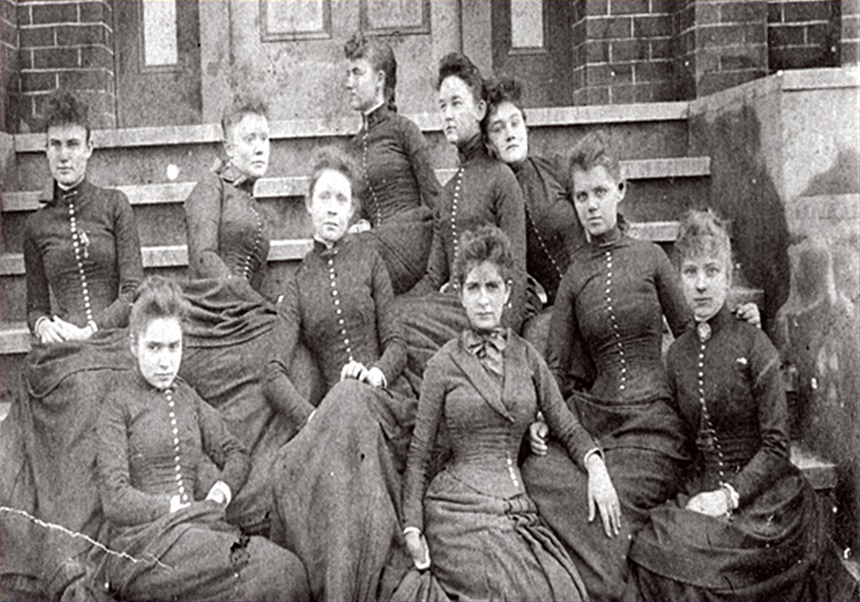
Educational opportunities for women beyond teaching school expanded in the United States during the 19th century. A number of colleges and universities were chartered specifically with female students in mind — but for a long time these were all expensive private schools. The state of Mississippi was the first to step up and fund a public school for women. The Industrial Institute and College for the Education of White Girls was created by the state legislature in 1884 and began its first classes in the fall of the next year. Its name was changed to the Mississippi State College for Women in 1920, and then, in 1974, to what it is known as today: the Mississippi University for Women (although, because of a U.S. Supreme Court case, it has been co-ed since 1982).
Pulitzer Prize winner Eudora Welty began her college career at “The W,” as it’s called.
Missouri — First Commercially Available Pre-Sliced Bread
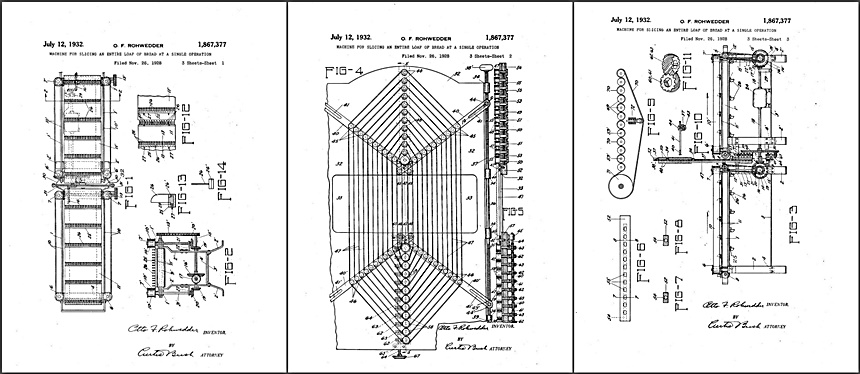
You’ve likely heard some invention described as “the best thing since sliced bread.” If you’ve ever wondered how far back in time that actually means, here’s the answer: 1928. And it all started with a jeweler fiddling around in Missouri.
An Iowan named Otto Frederick Rohwedder had set up shop as a jeweler in Chillicothe, in northwestern Missouri. But apart from being a jeweler, he liked to tinker. He got it in his mind to create a machine that would automatically cut up a loaf of bread into even slices. By 1917, he had sketched out blueprints and put together a working prototype — but then disaster struck: A fire destroyed all of his work. Starting over from memory, he continued to work through and improve his machine.
Finally, in 1928, he had reached his goal. He patented his new machine and began selling it to bakers, the first of which was Frank Bench of the Chillicothe Baking Company. They thus became the first company in the world to sell mechanically pre-sliced loaves of bread to a sandwich-hungry public.
Become a Saturday Evening Post member and enjoy unlimited access. Subscribe now
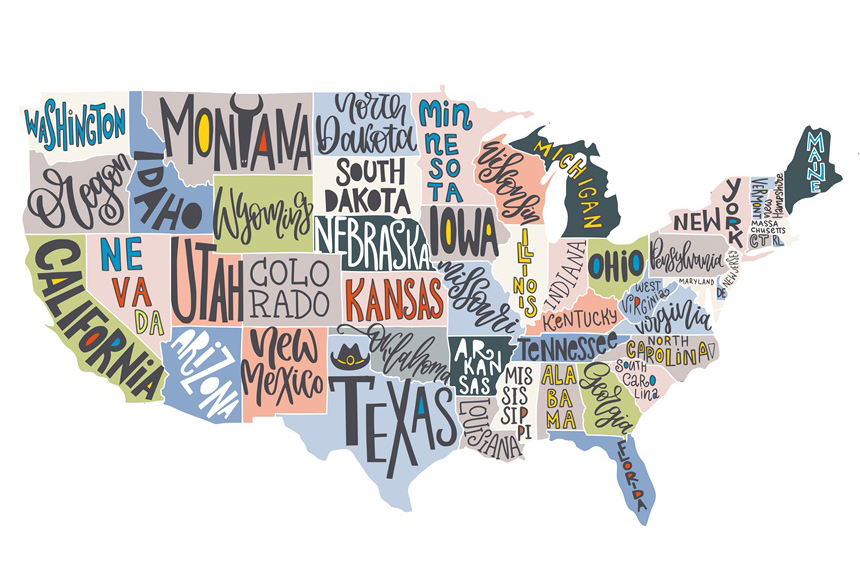



Comments
Dear Editor:
The state of Illinois and the state of Michigan share a joint historical event.
The University of Chicago, offered a course in medical X-ray medicine.
The member of the first graduating class, Dr. Nancy Chenoweth MD, [UofT] took this course, and, then established an X-Ray, practice in Escanaba MI.
https://www.findagrave.com/memorial/100482037/nancy-ann-chenoweth/photo
Not only was Dr.Chenoweth in the first graduating class, at the U of T., she was T H E only woman married as well to graduate.
She was a single parent at the time as her husband had passed from a typhoid outbreak.
Her choice of beginning her X-Ray practice in Escanaba, was straightforward, as her husband’s family were railroaders with C& NW.
She stayed at Escanba until her only son,RODGER, graduated in pre-medicine in Michigan, and, then they both
returned to Toronto.
She was the first woman doctor, to add to her practice in Chicago, while taking the X-Ray course, the first
practice in Chicago of the “Baby Well Care Program”.
That gave her income while she carried on her studies.
So far as can be determined she was THE first woman doctor to graduate with a certificate in X-Ray medicine.
https://www.findagrave.com/memorial/100482037/nancy-ann-chenoweth/photo.
Women from Green Bay and Appleton WI are said to have gone by train to Escanaba for her medical programs.
She continued both programs when she and her graduated son, Dr. Rodger Chenoweth MD came to Peterborough ON
Something both states can have the brag of being “firsts in medicine, and, a third, Wisconsin benefitted.
Sincerely.
Gord Young
Peterobourgh ON
Dear Editor:
I noticed, in the note about Elijah McKay and the many visionary accomplishments, I should have written that he was T HE first known Black person to hold a degree in Mechanical Engineering in both Ontario and Michigcn.
He was the Road Foreman of Engines…that I did mention for the Michigan Central which was backdoor owned by the New York Central RR.
The Michigan Central ran a railline from Detroit to Buffalo, and, in someone’s infinite stupidity, it was eventually lifted.
Michigan Central seems to have been a progressive railroad, as it hired a number of Black men, some as station operators, and, other rail related jobs, in Ontario, where there was, at the time, a large Black population occasioned by the “Underground Railway”.
Thank you for allowing me to amend the comment about Elijah McCoy the first Black Mechanical Engineer in the State of Michigan.
Thanks.
Gord
Dear Editor:
How about Canadian born Elijah McCoy, who was the first Black to be employed by a railroad [Michigan Central]
ttps://www.thecanadianencyclopedia.ca/en/article/elijah-mccoy
and, who developed an improved lubricating system for steam locomotives, that improved the reliabilty of the steam
locomotives of that era, and, thus improved timetable scheduling for both passenger and freights.
He then turned his attention to various machines that repaired locomotive parts that required lubrication.
He then turned his attention to other lubrication systems and improved upon existing systems or created brand new and more efficient systems.
The is the apocraphyl story, that the phrase “The Real McCoy” began with McCoy’s various inventions.
This put the State of Michigan on the map in those years before WW-1.
AND.
It makes me proud of being an Ontario person too.
Some states have a dubious distinction at being 1st. But, I guess that’s the best they can claim.
There’s my state, California, in its marijuana haze. I’d actually forgotten about it being the first to legalize cannabis 27 years ago for medicinal use. I never really partook until a few years into this never-ending pandemic nightmare, and the decline and fall of this state. Not the same person I was in 2019 and back as a result, but still not one to smoke it as such. A nice contact high though every so often is a pleasant compromise, and just what the doctor ordered.
Enjoyed the article and learned many new things. Can’t wait till you get to Texas, my home state. Thank you Saturday Evening Post!
I hail from Illinois and am proud and happy we get recognition for the Ferris Wheel.
However today most people connect the State only with rampant crime and some of the most corrupt politicians in the country. We also have not been lucky enough to attract any Statesmen for Governors just a slew of power hungry self serving second rate politicians..
Illinois is a beautiful place and has great
historical significance but .. with Chicago as we knew it, almost a memory, we are still allowing ignorance and stupidity and extremely poor leadership to be the symbol of the state..
Thanks for the interesting information. I’m in Tennessee, and I’m anxious to see what you have as a “first” for my State. I have something in mind.
Good old Illinois, the state that I reside in. I believe that we have the distinction of being the state that have had the most governor’s that have served time in prison. And to keep it fair and equal, the offenders have been Democrats and Republicans alike. Where have these men hailed from? None other than the area that gave us the notorious Al Capone, Chicago and it’s surrounding areas.